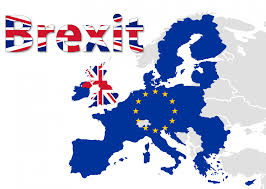
The forthcoming Brexit has broad implications for businesses. It also requires to adjust many EU laws, including in the field of intellectual property (IP) following the changes in the geography of the EU IP rights and in the beneficiaries of the ‘EU nationality’ (Of course, such nationality does not exist as such, but the national laws must be applied without discrimination between EU nationals, which creates a common set of rules applicable to EU citizens).
Territoriality
Intellectual property rights are subject to the territoriality principle: the protection is geographically limited, which means that the enforcement measures only apply within the territory associated with the IP right. For the unitary rights, the territory corresponds to the EU; national IP rights only apply to the relevant national territory; and Benelux IP titles cover Belgium on top of the Netherlands and Luxembourg.
The future exit of the UK from the EU, in principle on March 29, 2019 (the withdrawal date), will have reverberations on the territorial scope of the unitary rights, but as well on many other IP issues.
The September 7, 2017 position paper of the EU27 on IP rights (here) highlights the EU27 position, in particular on the issues prompted by the change of geography. The October 2017 position paper of the International Trademark Association (here) underlines the IP issues for trademark owners and for industry. I have also discussed similar issues in an earlier article entitled Droits intellectuels en mode post-Brexit: quo vadis Britannia? (published in Propriétés intellectuelles, juillet 2017, n° 64, p. 19-26, available Droits intellectuels en mode post.Brexit.PI 2017).
Here are some of the questions raised by the IP geography post-Brexit (to which the three above referenced documents might offer a response):
- On top of geographical indications (in the broad sense covering as well designations of origins), what are the other unitary rights which exist in the EU and will be affected by the Brexit?
- What are the common issues for the registered unitary rights post-Brexit? And the solutions favoured by industry for those rights?
- Is there a specific issue linked to a unitary IP right that is unregistered?
- Why does the EU27 paper on IP only address the exhaustion of protected goods put on the market before the withdrawal date? Is it because there will be no exhaustion problem after the withdrawal date? Thanks for explaining.
- Based on the three documents referenced above, what is probably the most striking difference between the IP rights protecting distinctive signs in the UK v. the EU27? Does this difference point towards an IP issue that has been hotly debated in recent international trade agreements? Thanks for adding some links to relevant materials on this.
Nationality
Not only will the geography of IP be affected, the UK citizens and in particular the UK IP owners might lose the advantages linked to the ‘EU nationality’. In principle, the enjoyment and exercise of IP rights are subject to the national treatment principle and assimilation principle embedded in various international Conventions – but the international framework for IP provides for some rare exceptions to this generous principle which is aligned on the principle of non-discrimination between EU citizens.
- Please discuss this in relation to the following hypothetical case: Mark Tailor is a UK designer of clothes, in particular of suits for … lawyers working in London. This is also where Mark is based and had his first clients. He has designed and produced a new 3 piece suit which is very original and completely unknown to the people active in the business of clothes for professionals. Mark and his company 3piece4you are expanding their business to other cities in continental Europe populated by young professionals. At some point, Mark discovers that a Belgian clothing company distributes the same 3 piece suit in various shops in Belgium. He believes this 3 piece suit infringes his IP rights. Mark and his company have not applied for a design protection valid in Belgium. Can they rely on another IP right for potential infringement proceedings in Belgium? What are the particular issues that need to be discussed if the sale of the allegedly infringing suits happens post-Brexit? Thanks for answering with a reference to the CJEU case law (in particular Tods v. Heyraud, case C-28/04).
- There is another issue relating to the national treatment addressed in the EU27 position paper. Please explain what this issue is, what IP right is involved, and what solution is proposed by the EU27.


